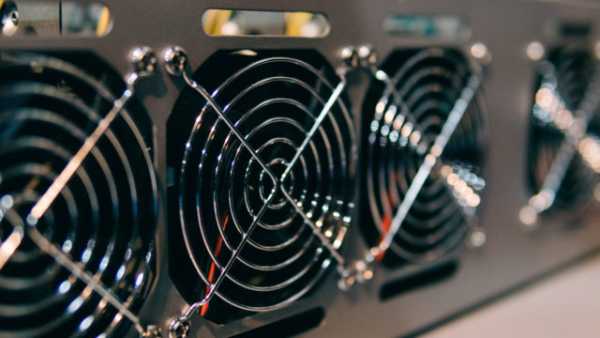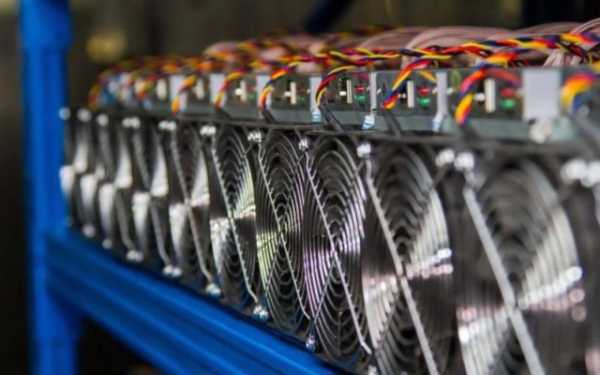Miners Benefit Most From US Bitcoin Strategic Reserve | Opinion

Disclosure: The views and opinions expressed here are those of the author alone and do not reflect the position of the crypto.news editorial board.
On March 6, Donald Trump signed an executive order to create the Bitcoin Strategic Reserve, part of a roadmap to make the United States the “crypto capital of the world,” as the president-elect had announced months earlier. The “digital Fort Knox” concept was finally about to become a reality.
You may also be interested in: US Focuses on Tokenized Certificates of Deposit | Opinion
However, the final version left out a key element that was most valuable to the market: the cryptocurrency included in the reserve turned out to be confiscated cryptocurrency from the government’s criminal and civil cases. While this is not the worst-case scenario (for example, the German authorities simply sell the confiscated cryptocurrency immediately), this scenario did not match the expectations of investors who were counting on open market purchases. Thus, the expected demand driver was dormant.
State reserves are going down this path
However, the establishment of a federal crypto reserve has set an important precedent for others to follow. States like Texas have been exploring the possibility of creating their own Bitcoin (BTC) reserve and are now just a step away from completing it. The Texas Senate passed what is known as SB-21 immediately after the president’s announcement, and Governor Greg Abbott must sign the bill into law immediately. Meanwhile, Florida and New Hampshire are developing legislative mechanisms to invest public funds in Bitcoin. While Florida’s bill is still pending, the New Hampshire Senate successfully passed a resolution on March 13.
So what does the name mean? Won't state reserves follow the example of the federal ones, transferring seized digital assets from criminal and civil cases to a special mechanism created by the state?
Reserves need more – and much more
There is no announcement yet on what the primary source of bitcoin will be for state-level reserves like Texas. It is also interesting how the caveat to develop “budget-neutral strategies to acquire additional bitcoin” was worded in the White House fact sheet. Given the rapidly changing regulatory environment and practices, the creation of the SEC’s dedicated crypto task force, and the court’s general softening toward digital assets, it is expected that the number of civil cases will decrease. Stronger cybersecurity practices, especially in light of the recent Bybit heist issues, will also lead to fewer criminal arrests. Even if the cryptocurrency confiscated was an easy start, its volumes will decrease in the near future.
Is a one-time reclassification of seized assets enough to meet federal and state requirements for a perpetual store of value? The U.S. government currently reportedly holds about 200,000 BTC — about $16.5 billion. That sounds like a lot, and it even exceeds the federal government’s current gold reserves. However, a quick look at the 2025 U.S. federal budget paints a different picture: The “digital asset reserve” represents only 1.03% of annual government spending. And that doesn’t even take into account state-level spending. Is that really a strategic reserve?
Reclassifying the confiscated digital assets was the most logical first step. But it is highly unlikely that this will be enough to make the U.S. the “crypto capital of the world,” as President Trump has said. New Bitcoin acquisitions will need to be made at all levels of government.
But how can open market transactions be protected from AML, FATF and other regulatory violations? How can we ensure that all digital asset purchases are transparent, secure and compliant? How can we trace the origin of every bitcoin that enters the strategic reserve?
The Solution: Local Mining in the US
The U.S. mining industry accounts for over 40% of the global Bitcoin network hashrate. Even with the increase in mining difficulty, this is more than enough to support all future government acquisitions. Most importantly, the bitcoins mined will be guaranteed to be clean and compliant, given future regulatory improvements in this area. Supporting local, compliant, easily traceable, and taxable businesses is a win-win for all parties involved, and tax revenues can be used to fund open market operations, in line with the White House’s “budget-neutral policies.”
States with a robust, stable energy grid and excess electricity are the easiest targets. For example, a report by the Perryman Group estimates that, given all the multipliers, developing a domestic mining industry in Texas would create 12,200 additional jobs and generate an estimated $1.7 billion in gross domestic product. If you extrapolate these numbers to the federal level, you can expect 31,000 new jobs and an additional $4.1 billion in gross domestic product each year. These numbers are too significant to ignore, and could be even higher if U.S. regulators create a transparent legal framework for mining and implement energy agreements and tax incentives to incentivize mining at all levels.
From Business to Strategic Base Layer
The creation of the US Bitcoin Strategic Reserve has become important
Source: cryptonews.net



